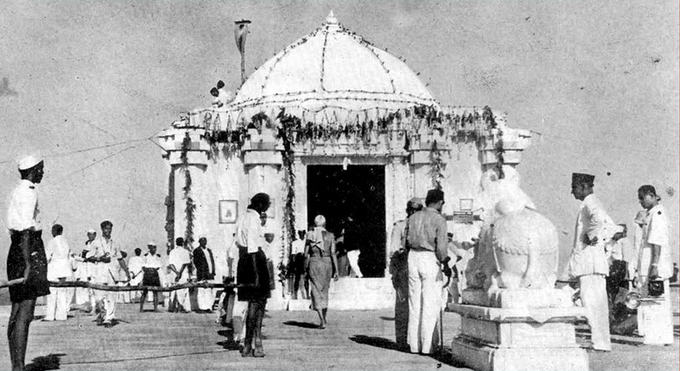Nehru’s secularism: The Somnath Fiasco


In the seaside village of Somnath in Prabhaspatan close to Veraval in the Junagadh district of Kathiawar in the Saurashtra region of Gujarat, the Somnath Temple is located on the Arabian Sea shore. It is 80 kilometers from Junagadh and 6 km from Veraval. Out of the twelve Aadi Jyotirlingas, it is the most revered. According to legend, the temple was initially constructed before the Common Era, or BCE. Six different rulers robbed and destroyed it, including the Arab governor of Sind in 725 CE, Mahmud of Ghazni in 1024 CE, Sultan Allauddin Khilji in 1296 CE, Muzaffar Shah I in 1375 CE, Mahmud Begda in 1451 CE, and Aurangzeb in 1701 CE.
However, every time it was rebuilt. Sardar Patel visited the Somnath Temple (located in the Junagadh State) around the time of Junagadh’s liberation in November 1947, when it was in a run-down state, and he promised to rebuild it and return it to its former splendor. Gandhi offered that the public should provide the finances for restoration when Patel informed him of the pledge; Patel accepted the suggestion.
The Archaeological Survey of India (ASI), which was founded by the then-education minister Maulana Azad, rejected reconstruction plans and urged that “the ruins be given to the ASI to be preserved in their current state. Notably, he never advocated for the same for the mosques and shrines built by the ASI for Muslims. Following Sardar Patel’s passing, the effort was continued by cabinet minister KM Munshi. Nehru, however, was open about his opposition to the idea and made derogatory comments, telling Munshi: “I don’t like your trying to restore Somnath. It is Hindu revivalism”. The sophisticated and cultured Munshi replied to Nehru with a pertinent and revealing message that comprised the following words: “It is my faith in the past which has given me the strength to work in the present and to look forward to our future. I cannot value freedom if it deprives us of the Bhagavad Gita or uproots our millions from the faith with which they look upon our temples and thereby destroys the texture of our lives…”
In May 1951, KM Munshi invited President Dr. Rajendra Prasad to the dedication ceremony of the restored Somnath temple. Dr. Prasad’s attendance at the occasion was strongly protested by Nehru, who wrote to him saying: “I confess that I do not like the idea of your associating yourself with a spectacular opening of the Somnath Temple. This is not merely visiting a temple, which can certainly be done by you or anyone else, but rather participating in a significant function which unfortunately has a number of implications…”
On March 11, 1951, Nehru also wrote to Rajaji about the following: “I wrote to him [Rajendra Prasad] that while there was obviously no objection to his visiting this temple [Somnath] or any other temple or other places of worship normally, on this particular occasion the inauguration of the temple would have a certain significance and certain implications. Therefore, for my part, I would have preferred if he did not associate himself in this way…”
Implications? Nehru’s ridiculous, flawed, and the self-serving idea of secularism was wounded by anything Hindu. Of course, he never gave the same importance to anything that was Muslim, Buddhist, or Christian. Understandably, Dr. Rajendra Prasad was present and responded: “I would do the same thing [attend inauguration] with a mosque or a church if I were invited… Our State is neither religious nor anti-religious.”
Dr. Prasad outlined the significance of Somnath by saying that it served as a representation of the country’s resistance to invaders. He delivered a powerful inaugural address, underlining, among other things, how the desire for civilizational regeneration that had been cultivated throughout the ages in the hearts of the populace had once more resulted in the praan-pratishta of the Somnath deity. According to him, Somnath represented the material and spiritual prosperity of ancient India. Somnath’s reconstruction won’t be finished until India reaches its former level of prosperity. Wow, what a speech! However, Dr. Rajendra Prasad’s address was muted by the official channels at Nehru’s request.
It is interesting that, despite the fact that the repair of Sanchi or Sarnath was accomplished using government finances, Nehru did not throw any such temper tantrums (while Somnath restoration was through public, and not government, funds). Why? The locations were Buddhist! Only Hindu places caused Nehru issues!
Source: 97 blunders of Nehru by Rajnikanth Puranik
DISCLAIMER: The author is solely responsible for the views expressed in this article. The author carries the responsibility for citing and/or licensing of images utilized within the text.
